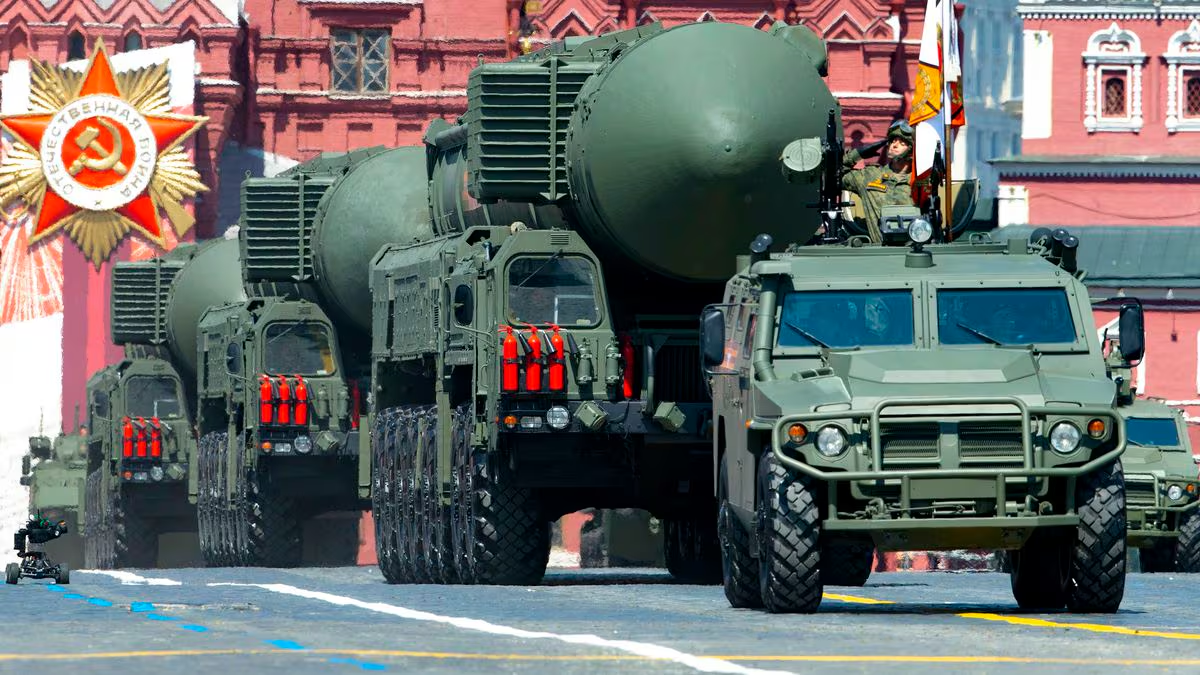A senior official of the Biden administration made a statement on Friday that in the case of no change in nuclear strategy by China or Russia, the United States will be forced to expand its nuclear arsenal.
The statement comes after decades of arms control agreements aimed at reducing nuclear weapons, although they have been mostly abandoned.
The statement made by Pranay Vaddi, who is a senior director in the National Security Council, was the most explicit warning that the US has made expressing its intention to expand its nuclear arsenal instead of merely modernizing the existing weapons.
This statement comes in response to Russian President Vladimir Putin’s comments about its ability to use nuclear weapons after fresh input of weapons by the US into Ukraine. The statement also was a warning about the likely US reaction if the last major arms control agreement, New START, was to expire in February 2026 without any replacement.
The threat of nuclear war
The announcement confirmed what was spoken of only through unofficial channels might plunge the world into a period reminiscent of the Cold War.
Fifteen years ago, President Barack Obama articulated a plan of progressing towards a world free of nuclear weapons and initiated measures to minimize their significance in American strategy and defense. Although the nation’s nuclear facilities were enhanced for safety and outdated weapons were replaced with more reliable, updated versions, the United States maintained its stance that it was merely “modernizing” its already existing arsenal and not expanding it.
During his tenure as vice president in the Obama administration, President Biden served as the spokesperson for this strategy.
At that time the balance was maintained due to China adhering to its “minimum deterrent” policy dating back to its first nuclear test in 1964 while Putin had no interest in an arms race that would financially burden his already struggling nation.
The situation, however, has changed since then. According to the Pentagon’s public estimates, China is on track to equal the number of deployed nuclear weapons held by the United States and Russia by 2035.
At the same time, Putin has focused on developing unconventional weapons, including an undersea torpedo capable of being launched across the Pacific to devastate the West Coast of the United States. Additionally, in recent months, the United States has issued warnings that Russia is actively working on a program to place a nuclear bomb into orbit.
New developments
Since Russia’s invasion of Ukraine, there have been no discussions about negotiating a replacement for New START, the treaty that limits each country to 1,550 deployed strategic nuclear weapons capable of being used in an intercontinental conflict.
Similarly, China has shown an unwillingness to engage in extensive discussions with the United States, making it obvious that it is not interested in arms control negotiations until its own arsenal is comparable to those of the two largest nuclear powers.
According to administration officials, one of the complexities of the current nuclear landscape is the possibility that Russia and China might coordinate their policies. This potential collaboration is part of the “partnership without limits” that President Putin and Chinese leader Xi Jinping announced in 2022.
While the Biden administration continues to, in theory, support a world without nuclear weapons, officials have acknowledged that the chances of new arms control agreements are now so remote that they must consider alternative strategies.
Mr. Vaddi cited the development of the B61-13 gravity bomb, designed for use against hardened and large military targets, as an example of the type of projects the United States might undertake.
Currently, the United States is focused on improving its arsenal rather than expanding it. However, Mr. Vaddi indicated that this approach could change.

1 Comment
Pingback: China is increasing its Nuclear Weapons, with 3 times as many as India: SIPRI Report